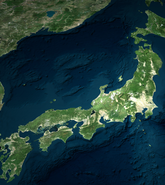NEWARK, CA – 16 July, 2022 – RMS®, the leading global risk modeling and analytics firm, announced today the release of Version 18 (V18) the latest version of its leading catastrophe risk management software.
Version 18 expands RMS clients’ global capabilities and brings to light new opportunities using the latest science, innovative methodologies and analytics to support profitable portfolio growth. Specifically, V18 provides the latest modeling insights to drive growth across the varied markets of the Asia Pacific region, including flood, which is a leading cause of insured loss in countries such as India.
The Asia Pacific model suite is being expanded to include new peril models for India Flood, Philippines Typhoon and Flood, and South Korea Earthquake. These newly launched peril models complement existing earthquake and typhoon models in these markets, providing a more holistic, market-focused solution. Expanding this regional focus, V18 also includes important updates to the Australia Earthquake and Australia Cyclone models, as well as to the India Earthquake model. India Flood covers the whole of India and includes tropical cyclone, and pluvial and fluvial flooding, and is the first fully probabilistic flood model for the Indian insurance market. The Philippines model provides wind, storm surge and inland flood model considering tropical cyclone and non-cyclonic rain, which provides a comprehensive solution to model climate hazard. In addition, Post Event Loss Amplification (PLA), which captures the potential for losses after severe events to be higher due to the impact of claims inflation, economic demand surge as well as super catastrophes, has been added to all new and updated models.
Looking beyond the Asia Pacific region, V18 expands the North Atlantic Hurricane model to cover the risk from hurricanes in the East Pacific basin. It also features storm surge updates in the U.S., as well as vulnerability updates across the U.S. and the Caribbean. The high-fidelity modeling tool, RiskAssessor, is being expanded to provide more accurate hurricane wind risk assessments in all regions of the North Atlantic Hurricane models.
Version 18 also underlines RMS’ commitment to global solutions with important expansions of the Marine Cargo and Specie, Builders Risk, Industrial Facilities and Terrorism capabilities; as well as the release of Industry Exposure Databases and Industry Loss Curves in peril regions impacted by the release.
Mohsen Rahnama, Chief Risk Modeling Officer, RMS said: “Asia Pacific has always been important to us. The inclusion of new models for the region, including Philippines Typhoon, India Flood and South Korea Earthquake should help enhance the opportunities for established operators and new entrants to better understand the potential for risk, and for growth, in these important markets. Flooding is an international phenomenon and V18 offers customers a more granular view of this on a more global scale. Updates can take many years in development, however, it is timely that the Australia Earthquake and Cyclone updates come just after we opened our Australia office last year. With the release of Version 18 we are confident that we are continuing to deliver the high standard of accurate information and analysis that our clients know and expect from RMS.”
ENDS
Notes to Editors
What is new in Version 18?
Philippines Typhoon:The Philippines is one of the most disaster-prone countries in the world, with around 20 cyclones per year, and eight of these making landfall. New model capturing risk from wind and flooding, coastal storm surge and season precipitation-driven flooding. The model expands the RMS suite of climate modeling solutions to the Philippines.
Australia Cyclone: Model update includes the most recent market and meteorological data and lessons learned from recent events, such as Cyclone Yasi in 2011, Cyclone Marcia in 2015 and Cyclone Debbie in 2017. The update also accounts for the rise in properties at risk, with the number of dwellings within 200km of the coast increasing by 15% between 2006 and 2016.
Australia Earthquake:Model update reflecting the latest scientific view of seismic hazard by incorporating data from the 2018 national seismic hazard map from Geoscience Australia. Updated event rates and ground motion models, combined with insight from local experts, provide the most up-to-date view of seismic risk in the country.
India Flood:New fully probabilistic Flood model. Flooding is the most significant natural hazard affecting India, comprising of about three-quarters of natural catastrophe losses. The new model combines the latest science with local engineering expertise, with an event set based on 125,000 events across 9,033 catchments throughout India; accounting for monsoon rainfall and expanding areas of impermeable ground in major cities such as Mumbai, Chennai and Delhi.
India Earthquake:India earthquake model is updated using the latest sources and vulnerability models with the signification validation of model using the systematic approach working with clients and academia. Update with high resolution geotechnical information for hazard amplification to differentiate risk. Over a thousand vulnerability functions are included with additional solutions for underwriting key exposures such as industrial facilities, buildings under construction, and marine cargo and specie risks. The financial model includes additional losses from landslide and liquefaction hazards.
South Korea Earthquake:New model model covers ground shaking, liquefaction, and landslide risk, enabling users to comprehensively assess earthquake risk in South Korea. While events in this region are relatively rare, they have the potential to be damaging. In 2016 the Mw 5.4 Gyeongju Earthquake hit and in 2017 the Mw 5.4 Pohang Earthquake occurred close to the city of Pohang, damaging more than 23,000 buildings.
Marine Cargo:Update allowing detailed insight into cargo fragility and exposure accumulation, enabling the identification of vulnerable concentrations of static cargo, the measurement of port accumulations, and the analysis of loss severity for key events.
Terrorism:Updated scenario model including updates to targets database for US, UK and Belgium; updates to hazard footprints and changes to the default time of day, to react to changes in peak times across different occupations.
North America Hurricane:Storm surge update incorporating new methods and data made available since the last U.S. storm surge model update. This enhances risk differentiation between defended and undefended areas prone to storm-surge. Also included are defense assumptions and wave treatment within the storm surge hazard module, as well as basement functionality and first floor height assumptions within the vulnerability module.
Post Loss Amplification:Post Loss Amplification (PLA) has been added for all the updated and new models. PLA captures the potential for losses after severe events to be higher due to the impact of claims inflation, economic demand surge as well as super catastrophes.





